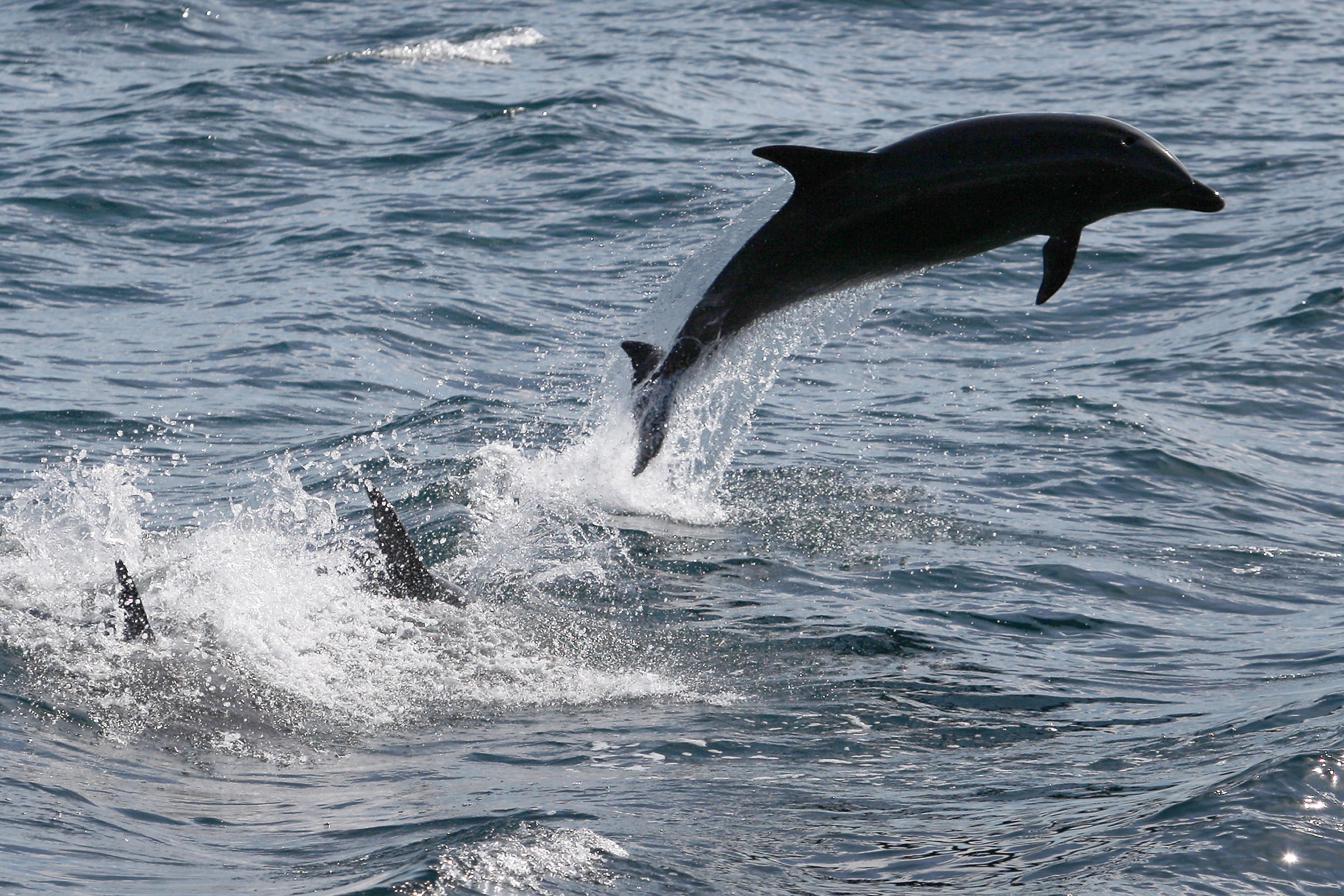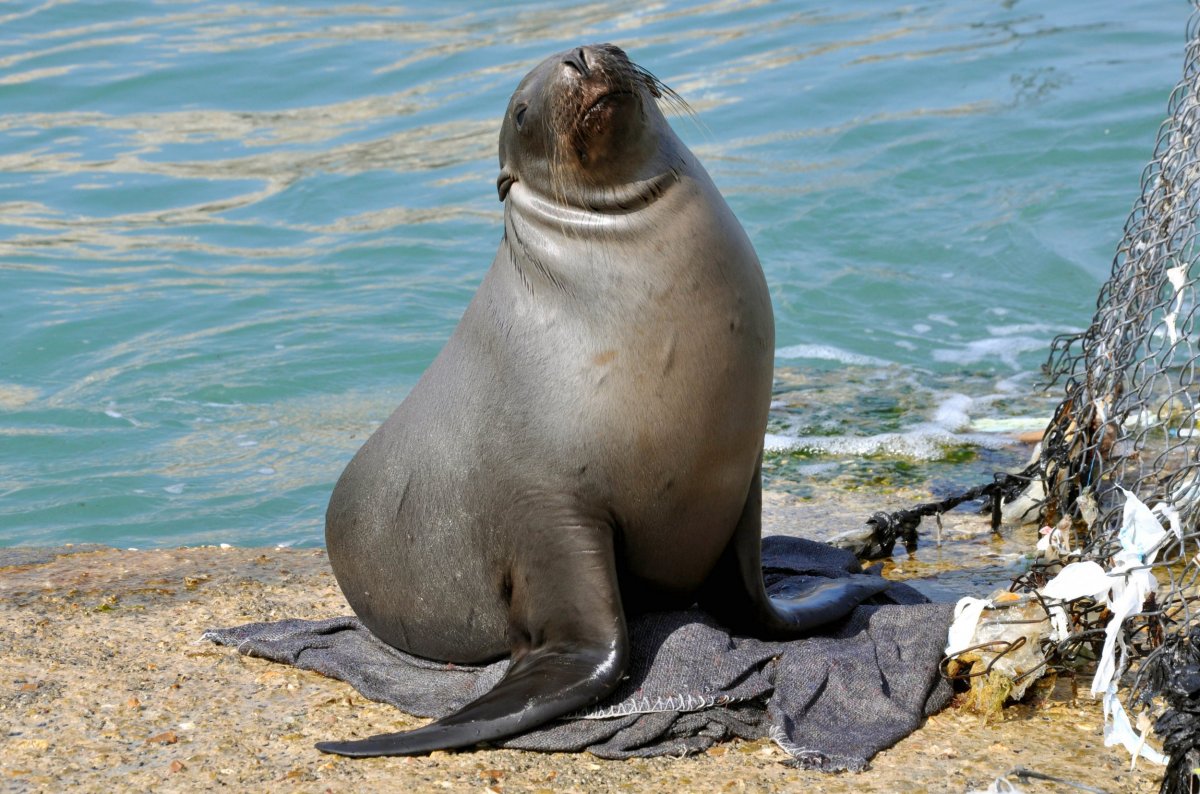
Scientists often need to figure out ways of understanding processes they can't see. Usually, that results in research much more mundane than that carried out by Dara Orbach, a researcher at Dalhousie University in Canada.
That's because Orbach is aiming to understand reproduction in animals like dolphins, harbour porpoises and harbour seals. Rather inconveniently for her, these critters aren't exactly exhibitionists: Much of their time is spent underwater and out at sea. So, she found a way to bring their mating habits to her, by studying their anatomy in the lab. A new paper published in the journal Proceedings of the Royal Society B recounts the latest results of her work.

Orbach was inspired by work done on insects and lizards. Researchers let them mate naturally, then dropped them in liquid nitrogen to flash freeze them and their active genitalia. It's a technique she described to Newsweek as "really exciting, but totally not feasible for anything larger than a tiny insect."
Larger as in, say, a 70-pound male harbor porpoise, whose penis (which is retractable and prehensile, by the way) you can see to scale here, in extremely rare footage of an above-surface mating attempt:
Orbach started by reaching out to a network of research and conservation scientists, requesting corpses of recently deceased harbour porpoises, common bottlenose dolphins, short-beaked common dolphins and harbour seals. Each animal's reproductive tract was cut out, frozen and shipped to Orbach and her colleagues to study.
The team wanted to see how the penises and vaginas fit together. So, Orbach took casts of the vaginas and then the team needed to inflate the penises to mimic how they behave in live animals.
That's trickier than it may sound, since the animals Orbach studies have, as she describes it, "a very different penis type" from humans and many other mammals. Those penises are encased by sponge-like tissue, which fills with blood to create an erection. Not so in dolphins, porpoises, seals and their relatives. "It's full of tough elastin tissue, so it's very resistant to bending," Orbach says. Colleague Diane Kelly, a biologist at the University of Massachusetts, realized she needed a way to pressurize salt water to pump into the penises. She turned to the gas, nitrogen, that is pressurized to put bubbles in a Guinness or a nitro brew coffee. That gave the salt water enough force to push its way into each penis.
Then, the scientists set about understanding how each species' anatomy fit together. That included inserting each preserved penis into its matching vagina to scan, plus creating 3-D models of the interactions.
Looking at the pairs, Orbach says she and her colleagues were struck by the tight fit. "We were basically looking at two identical structures," she says. "This is coevolution at its finest." The team saw two different types of this phenomenon, in which the penis and vagina change in lockstep with each other.
Short-beaked common dolphins and harbor seals, Orbach and her team found, have fairly straightforward penises and vaginas. But in harbour porpoises and common bottlenose dolphins, the penises featured bent tips and the vaginas hid dead ends that seemed to trap the penises if they weren't inserted at precisely the right angle. "That's something that we couldn't tell without actually putting the penis into the vagina and looking at them," Orbach says.
To Orbach, that reeks of reproductive tension between males and females—with the vaginal folds serving as a sort of escape hatch for a female mating with a male she doesn't quite believe is offering her healthy genes. If the female harbour porpoise or bottlenose dolphin twists just a little, the penis tip won't be able to reach as close to her eggs, reducing the probability her mate will become the father. "She might be able to control paternity through something as subtle as a small body shift," Orbach says.
That rings true to Janet Mann, a bottlenose dolphin biologist at Georgetown University. "As somebody who has witnessed lots and lots of mating behavior in the wild," she says, "you see that females do this all the time," twisting their bodies slightly during mating. She does note that studying only one pair of each species could hide differences among populations with different social structures.
And while Mann sees value in any work exploring dolphin reproductive anatomy, we know even less when it comes to harbour porpoises, according to Anna Hall, a marine biologist and president of the Porpoise Conservation Society based in Canada. During reproductive season, she says male harbour porpoises have what are known as "mega-testes," accounting for about one-twentieth of the animal's total body weight. (She can tell at a glance during a necropsy whether the animal is reproductively active.) Some scientists have taken that as a sign they're mating as often as possible, Hall says, adding that older scientific papers have described them as "truly promiscuous."
All this scientific interest isn't just idle speculation: Hall says that better understanding of reproduction in a species like harbour porpoises, where "virtually everything is difficult to study," may fill in additional puzzle pieces about their lives and the threats they face. From the dolphin perspective, Mann agrees: "Anything that has to do with reproduction has important conservation implications," she says.

Orbach is already headed that direction. She wants to compare these animals with their close relatives—including a hippopotamus whose penis she was invited to dissect last month, and surprisingly familiar animals like sheep, pigs and cows. Coincidentally, humans have been breeding these livestock species for millennia, including lately with elaborate artificial insemination programs, which she thinks could teach conservationists how to more effectively work around shared features like those vaginal folds and stiff penises.
Also, the casts made in projects like this could also find a new purpose in conservation science, Orbach says: She is working to produce fake vaginas that better resemble their living models, which might mean animals release more or better quality semen for artificial insemination. "I don't think anyone ever says, 'Oh, that's boring,'" Ormond says of her research.
Uncommon Knowledge
Newsweek is committed to challenging conventional wisdom and finding connections in the search for common ground.
Newsweek is committed to challenging conventional wisdom and finding connections in the search for common ground.
About the writer
Meghan Bartels is a science journalist based in New York City who covers the science happening on the surface of ... Read more
To read how Newsweek uses AI as a newsroom tool, Click here.








